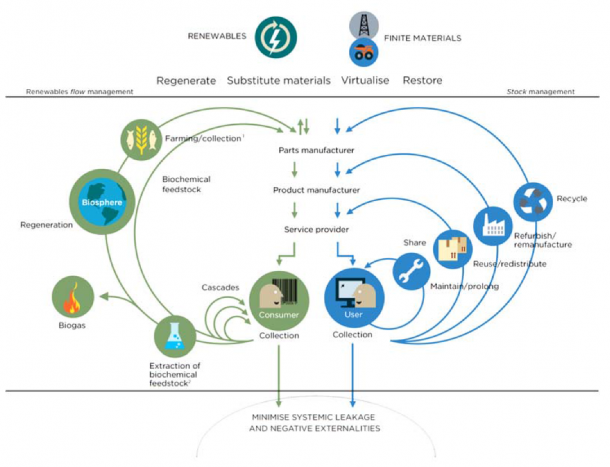by Melissa Lewis, Paper Conservator and ‘Green Champion’
One of the central goals of a “circular economy” is to separate economic growth from the consumption of resources. This concept can be traced back at least to 1990.1 In the last few years, the theory has gained considerable momentum. As far as conservation practice at the Victoria and Albert Museum is concerned, the workings of a circular economy can help us to understand and enhance green, clean operational procedures on two principal counts: first, in re-utilizing materials, by separating groups of materials and then re-manufacturing them into renewed products; and second, by consciously choosing materials that are not hazardous to the environment or human health.2
Materials and tools used for conservation at the V&A (and other museums) are more often than not made from new, mostly finite resources. To demonstrate how the circular economy might work at the V&A let’s take the example of a book cradle. This is a custom-made mount for a book at the specific page-opening chosen for an exhibition. It cannot be adapted for use with a different book or even a very different page-opening. It is made from Poly(methyl methacrylate), which is a derivative of crude oil pumped from the ground, processed into a polymer and then pressed and cooled into a sheet of Perspex. This sheet is cut, heated and bent into shape, ready for use in an exhibition. On rare occasions, the cradle is kept and re-used for a second exhibition. A book cradle in a circular economy could be ground down into pellets, heated and remade into a flat sheet of Perspex and moulded into a new cradle – without any impact on quality (Figure 1).

Given that anything coming into contact with an artefact or object must be tested for the presence of corrosive agents (Oddy test), any chosen renewable and/or green materials need to comply with these criteria.
Two possible alternatives to, say, Perspex (a material much used in the Museum for many different applications) could be:
1. Green Cast acrylic sheets: these sheets of acrylic have the clarity and qualities of Perspex necessary for museum use. However, unlike the Perspex we use at present, it is made from 100% recycled poly(methyl methacrylate) waste. Moreover, the manufacturer collects used Perspex and recycles it into the new (itself recyclable) product.3
2. In-house plastic recycling unit: this process would involve making similar high standard acrylic sheets in-house out of Perspex and other waste materials used in previous exhibitions.
While the ideal would be to attain 100% renewability in all museums, creating, developing and then sustaining the principles of a circular economy within the V&A would create a firm ethical foundation for the future – one that could be adapted to environmental, policy and other changes in the coming years.
References
- Pearce, D.W., Turner, R.K., Economics of Natural Resources and the Environment, Johns Hopkins University Press, 1990.
- https://www.ellenmacarthurfoundation.org/circular-economy/interactive-diagram [access 2 September 2018]
- https://amariplastics.com/product/green-cast/ [access 2 September 2018]
Further reading


